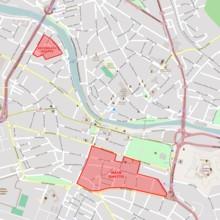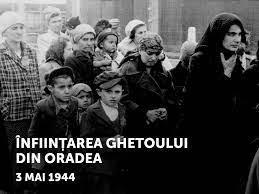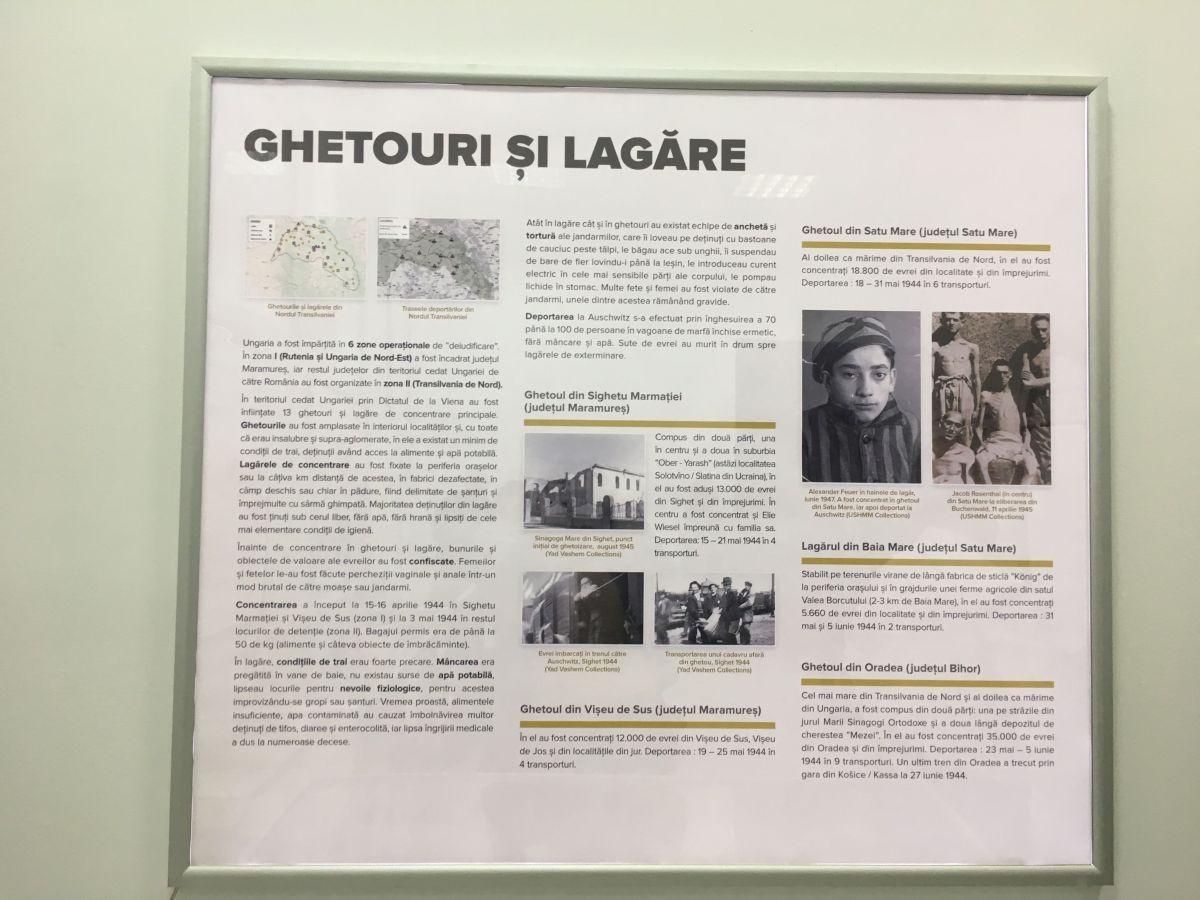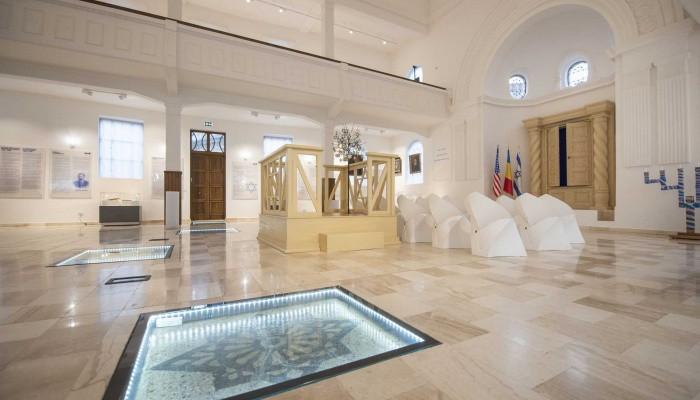




EUROPEAN STUDENTS RESPONSIBLE, MOTIVATED, INTELLIGENT EMOTIONALLY AND USEFULLY Project funded by the European COMMISSION Project No. 2020-1-RO01-KA229-080403
The largest ghetto in Hungary was organized in the town on Criul Repede,ș with the exception of the one in Budapest, which was established later, in November 1944.In fact, two ghettos operated in this city: one for the local Jews, in which approximately 20-21,000 people were crammed, located near the Hevra Sas Orthodox Synagogue in Oradea and Pieţa Mari, in the area most densely inhabited by the poor Jews; the other, for the almost 8,000 Jews brought from the rural communities of the following twelve districts: Alesd, Berettyóújfalu (today, in Hungary), Biharkeresztes (today, in Hungary), Cefa, Derecske (today, in Hungary), Marghita, Oradea, Săcueni , Sălard, Salonta Mare, Sárrét (today, in Hungary) and Valea lui Mihai. Many of the Jews of these communities were concentrated in the Mezey wood depot
GHETTOS FROM ORADEA



On May 2, 1944, the mayors drew up special instructions addressed to the Jews and spread them throughout the area under their jurisdiction.The ghettoization of the nearly 160,000 Jews from Northern Transylvania began on May 3, 1944. The gathering of the Jews was done according to the provisions of Decree no. 6163/1944, by teams established by the local mayors whose composition included civil servants, primary or secondary school teachers, gendarmes and policemen, as well as Nyilas volunteers. The units were organized by town hall commissions and acted under their jurisdiction.In Oradea, the procedures for locking up the Jews in the ghetto started on the morning of May 3, 1944, when, throughout the city, 3 orders signed by the vice-mayor Dr. Gyapay Ladislau were displayed.

Establishment of the Oradea Ghetto, Romania 03.05.1944

STARTING AT 5 IN THE MORNING, APPROXIMATELY 100 COMMITTEES WERE MOBILIZED, EACH FORMED OF THREE MEMBERS: AN OFFICIAL FROM THE MUNICIPAL ENTERPRISES, A CITIZEN AND A POLICEMAN, WHO HAD THE ROLE OF GUIDE THE JEWS TO THE GHETTO, THE SPACE IN QUESTION BEING SURROUNDED OF A FENCE OF PLANKS 2-3 METERS HIGH. THE HOUSES IN THE PERIMETER OF THE GHETTO WHICH HAD WINDOWS DIRECTED TO THE SURROUNDING CHRISTIAN DWELLINGSWERECLOSEDWITHBOARDS.
The specially designated perimeter of the ghetto was surrounded by a 2-3 meter high fence, made of timber, the windows facing the city being closed with wood, so that the isolation was total. The Nagyvárad newspaper of May 6, 1944 stated that the length of the fence surrounding the ghetto was 2,800 linear meters, of which 2,300 were of planks and the rest of stone walls and the inclusion of other constructions

The electric power and the telephone line were stopped from the first day, and the drinking water only flowed in the morning for a maximum of 1 hour. Another major problem was the functioning of the toilets. Numerous latrines were dug behind the houses, but the increasingly strong and unpleasant smell lingered inside the ghetto.
The ghettoization of the Jews of Oradea was completed by May 10, 1944. On May 10, 1944, a Camp Regulation was issued, signed by the commander of the gendarmerie training battalion and of the ghetto, a document displayed on the main door of each house in the ghetto perimeter, as well as on each floor of multi-story houses.

The approximately 35,000 Jews from Oradea and its surroundings were deported to Auschwitz in 10 transports, in the first set of trains the Jews concentrated near the "Mezei" timber warehouse were transported.

The dates of deportation from Oradea were: May 23rd, 1944 (3,110 people), May 25th, 1944 (3,148 people), May 28th, 1944 (3,227 people), May 29th, 1944 (3,166 people), May 30th, 1944 (3,187 people), May 31st, 1944 (3,073 people), June 1st, 1944 (3,059 people), June 3rd, 1944 (2,972 people), June 5th, 1944 (2,527 people). A last train with Jews from Oradea passed through the station in Košice on June 27th, 1944 (2,819 people)





All rights reserved. No part of this publication may be reproduced, in any form or any means, without permission in writing from the authors.
,,The European Commission is not responsible for any uploaded or submitted content. The content reflects the views only of the European Commission cannot be held responsible for any use which may be made of the information contained therein”


THANK YOU! THE ROMANIAN TEAM Teacher: ARDELEAN KLEMENTINA LICEUL TEORETIC ADY ENDRE ORADEA Translation: teacher Ghiulescu ț Daniela, Costeti Technological Highș School




















